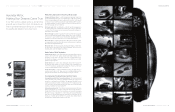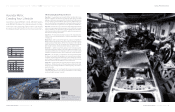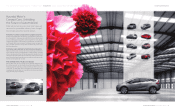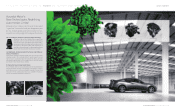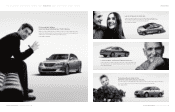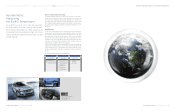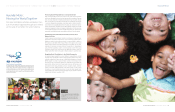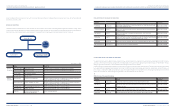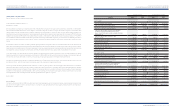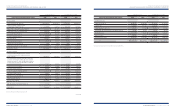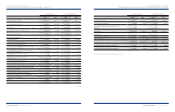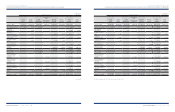Hyundai 2008 Annual Report Download - page 25
Download and view the complete annual report
Please find page 25 of the 2008 Hyundai annual report below. You can navigate through the pages in the report by either clicking on the pages listed below, or by using the keyword search tool below to find specific information within the annual report.
Efforts to Alleviate Climate Change
As a global automaker, Hyundai Motor is aware of the importance of responding to
climate change, and is doing its utmost to reduce greenhouse gas emissions. The
best way to reduce greenhouse gas emitted by automobiles is to reduce the use
of fossil fuels and replace them with low-carbon and alternative energies. Hyundai
Motor is leading the way in developing hybrid cars that will reduce fuel consumption
by over 50% as well as hydrogen fuel cell electric vehicles that will usher in the non-
gasoline era.
Hybrid Vehicles
In 2004, Hyundai Motor delivered 50 Getz hybrid vehicles to Korean government
agencies as part of a fleet demonstration project, followed by 200 units of the Verna
hybrid vehicle in 2005 which were delivered to government agencies in the Seoul
metropolitan area. Hyundai extended its project to the five major metropolitan
areas with 220 units in 2006, and public centers such as kindergartens, schools,
and welfare centers in 2007. By 2008, the total tally reached approximately 1,010
hybrid cars. In 2009, Hyundai Motor will extend its efforts to actual customers by
commercializing the Avante LPI (LPG injection) hybrid car.
In 2010, a mid-size hybrid vehicle featuring Hyundai Motor’s independently developed
hybrid architecture will be launched in the North American market. Hyundai will also
increase its R&D resources to commercialize a Plug-in hybrid vehicle that can have
its battery recharged at home and be driven in an all-electric mode for short distances
by 2012.
1.
2.
Next-generation hybrid Sonata
3.
Santa Fe hybrid engine
01
02
03
Development Status and Future Plan of Hybrid Vehicles
2005
Delivery to government agencies
in Seoul (200 units of Verna)
2006
Delivery to government agencies
(220 units of Verna)
2007
Delivery to public centers
(300 units of Verna)
2008
Delivery to public centers
(710 units of Verna)
2009
Localization of parts and
commercialization of the LPI
Hybrid
2010
Production based on exclusive
hybrid architecture;
increase exports
2012
Plug-in Hybrid Vehicle
1995
Development of Concept-I
2000
Demonstrative production (Verna)
2004
Fleet demonstration at the Ministry
of Environment (50 units of Getz)
1st Stage(~2004)
Secure mass production
technologies
(Demonstrative production)
Secure mass production
infrastructure
(Localization of key parts)
Diversity portfolio
(Increase exports)
2nd Stage(2005~2009) 3rd Stage(2010~)
No matter how much cars make life convenient,
it’s meaningless if we don’t have a healthy earth.
ByinvestingunsparinglyinourR&Dresources,we
at Hyundai Motor are leading the fight not only to
reduce greenhouse gas emissions but also to stop
climate change.
Hyundai Motor,
Preserving
the Earth’s Temperature
>>
REACTION TO WEATHER CHANGES & ECO TECHNOLOGY DEVELOPMENT
HYUNDAI MOTOR COMPANY I 2008 AnnuAl RepoRt I 49HYUNDAI MOTOR COMPANY I 2008 AnnuAl RepoRt I 48
IntRo I fInAnCIAl hIghlIghts I MessAge fRoM the Ceo I to. toMoRRow I to. Best I hyundAI wIth Me I TO. DOING I hyundAI wIth honesty I suppleMent I fRoM. hyundAI



